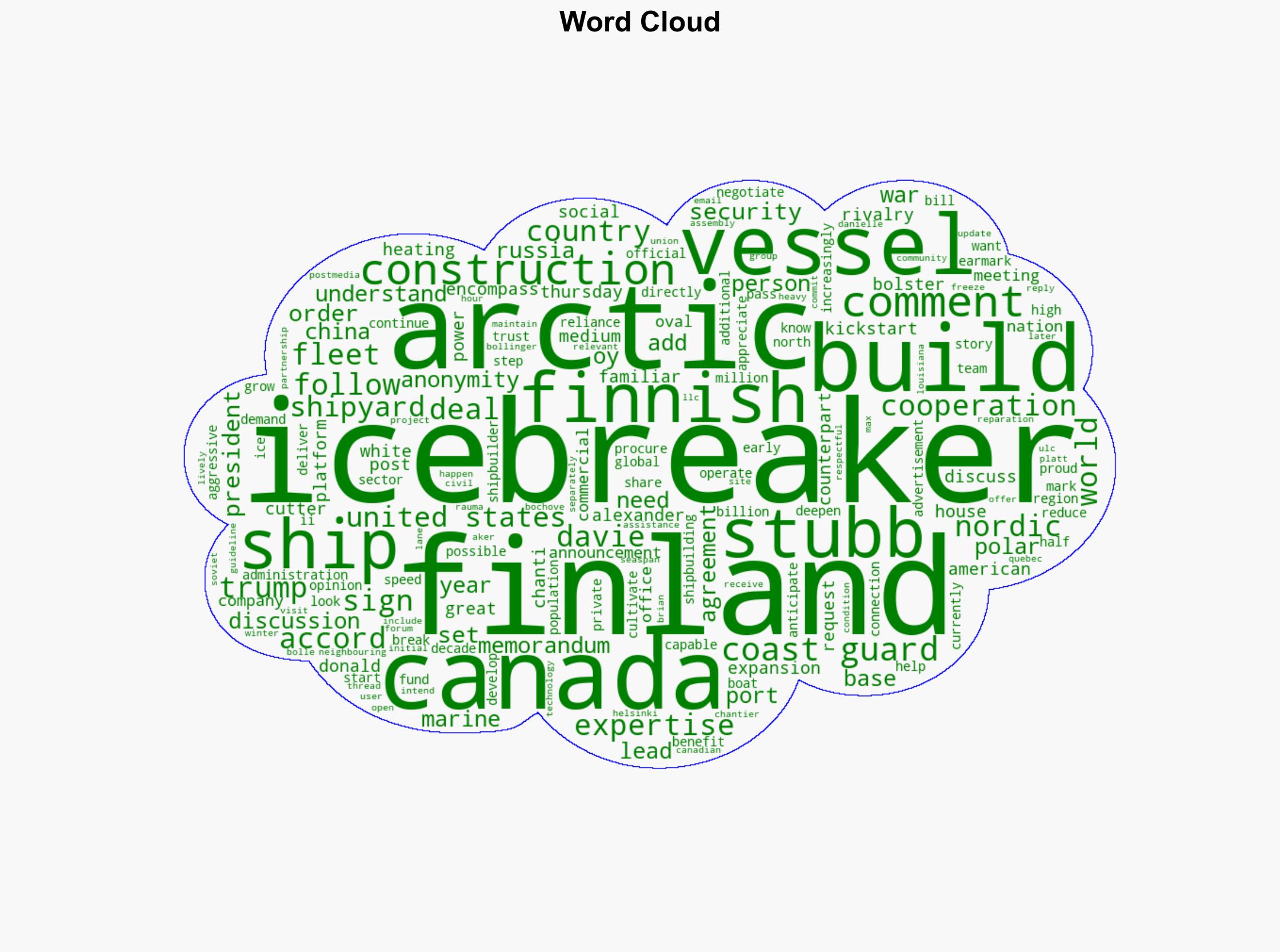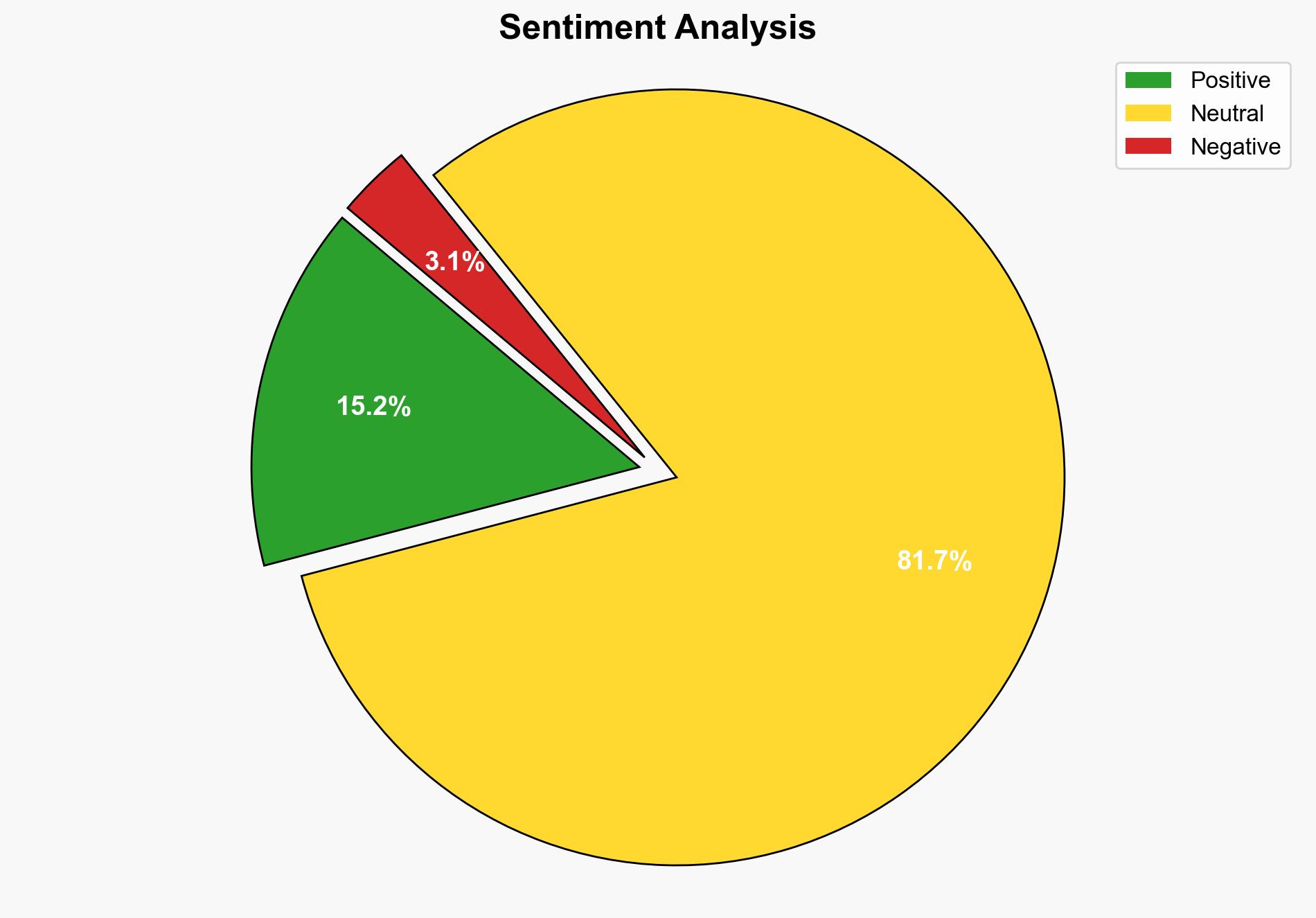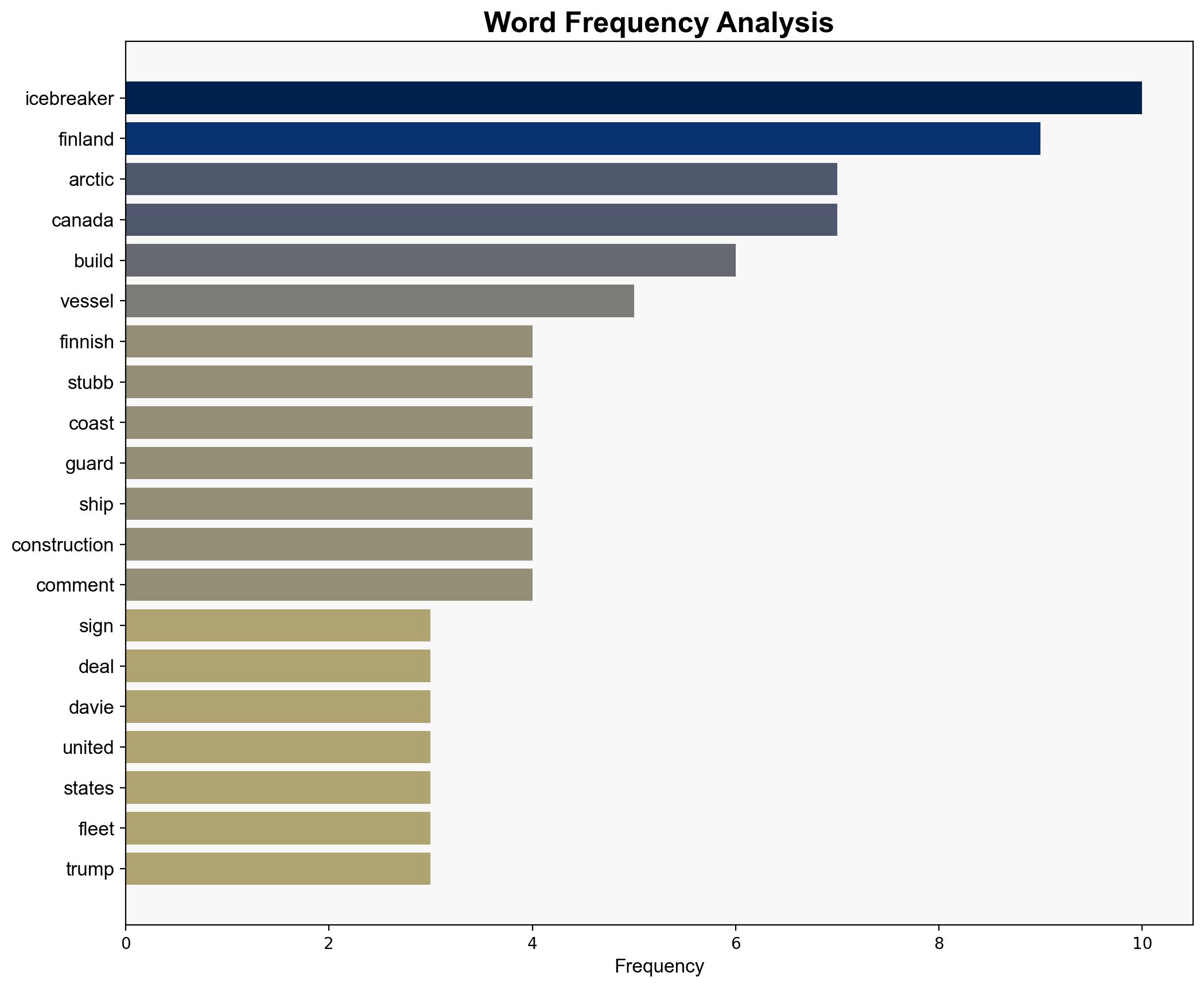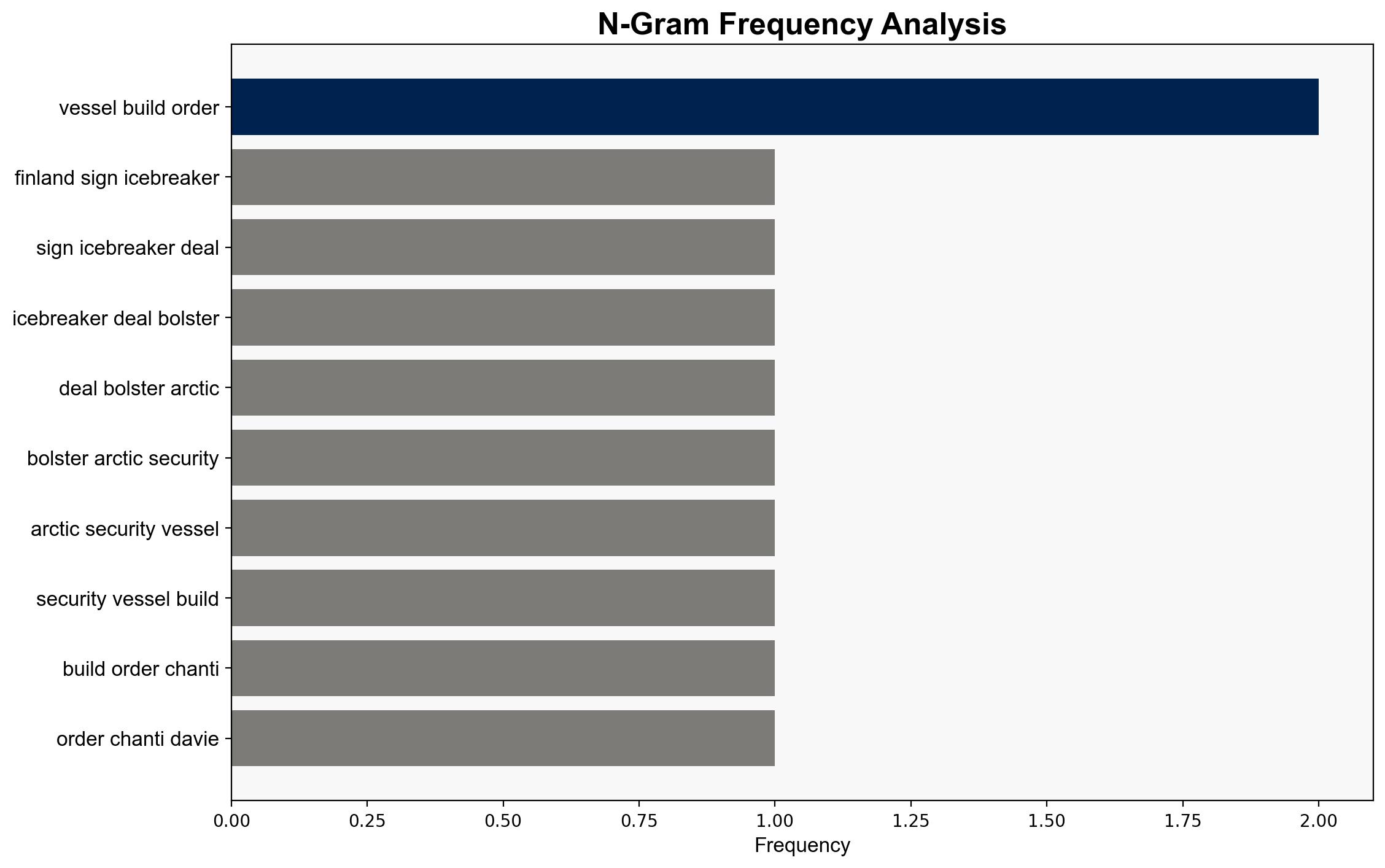US and Finland to sign icebreaker deal to bolster Arctic security – Financial Post
Published on: 2025-10-09
Intelligence Report: US and Finland to sign icebreaker deal to bolster Arctic security – Financial Post
1. BLUF (Bottom Line Up Front)
The most supported hypothesis is that the US-Finland icebreaker deal is primarily a strategic move to counter Russian and Chinese influence in the Arctic. Confidence level is moderate due to reliance on indirect sources and potential undisclosed motivations. Recommended action includes enhancing intelligence sharing with Nordic countries and increasing diplomatic engagement to ensure alignment of Arctic policies.
2. Competing Hypotheses
1. **Strategic Counterbalance Hypothesis**: The deal is a strategic initiative by the US to counter Russian and Chinese activities in the Arctic, leveraging Finnish expertise to enhance its icebreaking capabilities.
2. **Economic and Industrial Collaboration Hypothesis**: The deal is primarily driven by economic interests, aiming to boost shipbuilding industries in the US, Finland, and Canada, with security considerations being secondary.
Using Analysis of Competing Hypotheses (ACH), the Strategic Counterbalance Hypothesis is better supported due to the emphasis on Arctic security and the context of great power rivalry. The Economic and Industrial Collaboration Hypothesis is less supported as the narrative focuses more on security implications rather than economic benefits.
3. Key Assumptions and Red Flags
– **Assumptions**: The US perceives a significant threat from Russian and Chinese Arctic activities. Finland is willing to align its Arctic strategy with US interests.
– **Red Flags**: Lack of direct statements from key decision-makers could indicate undisclosed strategic objectives. The anonymity of sources discussing the deal suggests potential bias or incomplete information.
– **Blind Spots**: The potential impact on US-Canada relations and how this deal might affect broader NATO dynamics in the Arctic region.
4. Implications and Strategic Risks
– **Geopolitical**: Increased US presence in the Arctic could escalate tensions with Russia and China, potentially leading to a regional arms race.
– **Economic**: Collaboration could stimulate shipbuilding sectors in involved countries, but may also lead to dependency on Finnish technology.
– **Cyber**: Enhanced Arctic operations could be targeted by cyber espionage from adversarial states.
– **Psychological**: The deal might embolden US allies in the region, but could also provoke adversaries to adopt more aggressive postures.
5. Recommendations and Outlook
- Enhance intelligence sharing with Nordic countries to monitor Arctic developments.
- Engage in diplomatic initiatives to align Arctic policies with allies and mitigate potential conflicts.
- Scenario Projections:
- **Best Case**: Strengthened Arctic security cooperation deters adversarial actions without escalation.
- **Worst Case**: Increased tensions lead to an Arctic arms race, straining international relations.
- **Most Likely**: Moderate increase in Arctic security presence with ongoing diplomatic negotiations.
6. Key Individuals and Entities
– Donald Trump
– Alexander Stubb
– Finnish shipbuilding companies
– United States Coast Guard
– Canadian shipbuilding entities
7. Thematic Tags
national security threats, Arctic strategy, geopolitical rivalry, international collaboration




